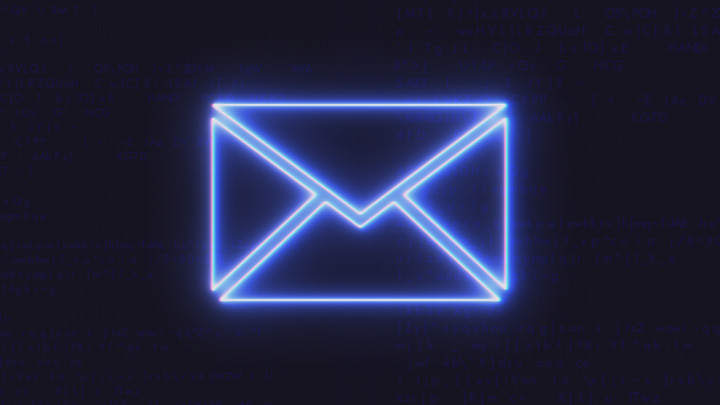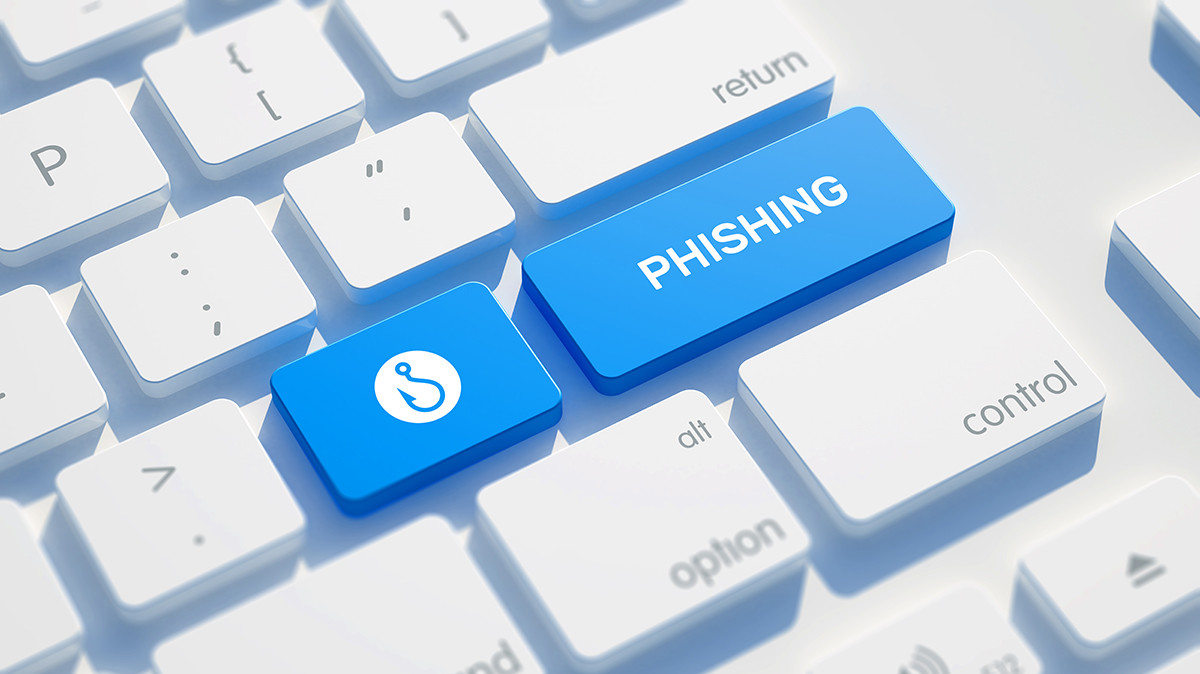The Email Revolution Transforming Customer Experience
Email has become a vital e-commerce tool, and new initiatives are set to improve security, user experience, and ROI, say Marcel Becker from Verizon Media Group and Seth Blank from Valimail.

© The7Dew | istockphoto.com
Watch the 14-minute video above or on YouTube, or read the transcript below.
Transcript
DOTMAGAZINE: How has email marketing evolved from its origins as a simple push tool?
SETH BLANK: The evolution of email is fascinating because if you go back even a little bit before your question, email as it was built was never envisioned to be used the way it is today. It was started as college professors talking amongst themselves and then it was used for personal communication in a very limited way. And it was only at the end of the 90s, early 2000s, that it became a mechanism for businesses to talk to consumers. And it became a mechanism for commerce. And for push notifications – here’s something you should buy, here’s something you want. And it was sort of the Wild West, and there was a lot of abuse and a lot of problems.
Everyone remembers what their email client looked like in and around 2000 or 2002, where it was just garbage. It was full of spam, full of advertisements for pills. You’d see perhaps a big brand: that brand sent you mail but it wasn’t from the brand, it was the Wild West. And so there’s been a lot of work to make the email experience more secure and then richer for consumers.
And so that work has just taken tremendous strides from the early 2000s to now, with the advent of authentication technologies, and now the technologies we spoke about at the CSA Summit today: specifically AMP, the use of schema.org, richer payloads, and more. But it’s been this arc from a personal one-to-one communication to a medium for businesses to communicate with users, and the richness that comes with that if you do that securely. And e-commerce has taken over email as a media.
DOTMAGAZINE: What would you consider to be the key drivers for this evolution?
MARCEL BECKER: I think it’s on both sides really. It’s the consumers, the users who are really on the receiving end of email, and the brands finally now realizing that email is really the brand-to-consumer communication tool. It’s not your personal communication tool anymore. Ninety percent of all email is brands to consumer. Maybe ninety-five percent even as we’re speaking right now.
And now everybody is finally realizing we can and should do a better job in bringing and providing a better experience for our mutual customers. Our users are the same customers of the brands who are actually sending the email. It’s not us versus them. We are really in it together to build and create the perfect and rich and safe environment for our customers.
It’s really realizing that email now is an e-commerce platform or it’s part of an e-commerce platform. Especially when you see the acquisitions and the reshaping of the industry, the consolidation which is happening – Adobe acquired Marketo, Twilio acquired Sendgrid. Before that, Oracle acquired a whole bunch of email senders. Those are all big marketing or e-commerce platforms and email is an important channel of that to really support the lifecycle or the user journey of a customer. And they want to decide or they’re looking at when is the right time to reach that customer. And email plays an important part.
Up until now – and maybe even now still – a lot of people treated or are treating email as a stepchild. Nobody really understands what email can do and should be doing in that context. And now we’re seeing these big corporations really realizing that email is important to reach the customer at a certain period or at a certain time.
DOTMAGAZINE: What is still limiting the further evolution and how can we overcome this?
BECKER: I think it’s a revolution we are witnessing. It’s not necessary an evolution. It started as that – we added technologies to existing email protocols and products aimed at solving some security and trust problems, like DMARC and all the authentication, but now we’re adding other tools and technology, and I think combined we are turning email into something else. And I think that’s a revolutionary moment.
BLANK: I’d actually like to pick up on that. I think that the critical thing that’s happening now is that historically email has been an untrusted media. I mentioned the inbox of the 2000s, but now with the technologies Marcel has mentioned specifically with DMARC, when there’s confidence that you know who a sender is – this is definitely Macy’s, this is definitely Target, this is definitely 1&1 or whoever it is – now you can do something different in email that’s never been possible before. And now there are messaging apps everywhere. So personal communication is moving aside and email’s really becoming a vehicle for trusted brand communications and that’s where we’re moving, and that’s what the theme of today’s CSA Summit was. Well we have a trusted medium for a brand to communicate with its consumers through. How do you make that richer and more personal and better for everyone involved?
BECKER: So obviously some of the pain points are just inherited by the nature of email, how email has been structured. I think email works so well, and email provides the return of investment it does provide because it’s very well understood. It’s relatively cheap, it’s free, everybody understands the protocol, technology is available. People or consumers like email because they can interact with email on their own terms. They don’t have to necessarily interact with it right now, it’s not like an advertisement which is in your face when you don’t want it. It’s not like the Facebook feed, where you actually just care about what’s the latest with your friends. It comes in and you can decide when to interact with it.
So there are all these benefits but with the limited technology, I would say, there come pain points or things which are not supported today. And they start with trust, authentication, they continue with maybe providing a richer experience within that environment. We talk about dynamic email, rich email – not everybody supports it, because you have a diverse landscape of different senders, different email providers, different mail applications out there and they all support different kinds of things. And then they continue with what email marketers or e-commerce platforms really want: they want tight control over the experience but they also want access to data. And all of these things today are more or less not available – control over the experience, access to data, and the trust anchor. They are kind of missing by design, and that’s what we are working on fixing.
DOTMAGAZINE: What are the exciting initiatives that are taking email forward?
BLANK: I think spending a little bit more time talking about BIMI is really worthwhile, because we’re breaking new ground here. Because as Marcel was just talking about, trust is essential. And knowing who the sender of a message is, is absolutely critical to do the right thing, to not display something fraudulent to a user, to not let someone insert themselves into a payment flow. It’s got to be a secure system.
DMARC is the answer to that. But DMARC is an ecosystem problem. Adoption of DMARC is not where it needs to be to create the personalized email ecosystem of tomorrow. BIMI is an incentive, a reason that you can get to go, “I have done DMARC. Now look at this benefit: I can put my logo in front of users. I have direct control now.” That’s really powerful and that’s really meaningful. And that’s good for brands, that’s good for users, and that’s good for the receivers of email, because – due to DMARC – we know the email’s from who it says it’s from, and we can create richer experiences on top of that, that weren’t possible before.
BECKER: I always looked at this as a stepping stone because, as he was saying, the marketers – the people are actually paying for these campaigns – they also need to understand or need to see what the ROI actually is. Because that’s just like with all the other platforms. And if you just approach them and say, “Hey, you need to do this weird technical thing. I can’t really explain how it works and nobody knows,” they would probably say: “Why?”. And if you package it all together and not just talk about that one piece of the puzzle, but you actually paint the bigger picture and say, “Well this is the foundation. We need to trust you. This is the technology you need to implement. And once you have actually done all of that, then this entire world of all these new opportunities which are not possible without that foundation open up”. And BIMI was one of the first stepping stones to me or pieces of the puzzle which provided that incentive. And there are obviously more. But it’s one of these carrot and stick kinds of approach, right? Do this and you get that.
BLANK: Yes, this stick has been prevalent in email for a while. You see question marks or fishhooks, or images don’t show, or you get these big banners, but when you do everything right, there is your email. And BIMI is saying, you do everything right, and you can get more. And it’s the first real carrot in this world that I’m aware of (I don’t know if you’re aware of other ones) but it’s a meaningful way where you get frankly security and brand benefit at the same time that’s visible.
DOTMAGAZINE: What best practices should email marketers now consider?
BECKER: Email marketeers looked at the very technical KPIs. What we call deliverability. There was an entire industry around it. Companies advising what’s the best way to get your email delivered. It’s all around technical things. So I think this is the first example of a carrot and stick. Do this so ISPs actually deliver your stuff to the inbox, plus then people tend to engage with the email more.
And now we are piling onto that. It’s not just that you need to follow these best practices to get the stuff delivered. No, now you also need to employ ideally all these other technologies because then even more people will engage with your email. I keep saying don’t treat email just like print: it’s not you have this one newsletter and you just get it into the door of the ISP and then: poof! Cheap and easy. Now you need to actually spend a little bit more money. Maybe print less of these flyers or send less of the same email, but do it more in a more personalized way, leverage new technologies; you get higher engagement, higher return of investment and at the end of the day, maybe you spend a little bit more money, but you also make money. And you send less garbage. So everybody’s happy.
DOTMAGAZINE: How can email impact customer experience vis-à-vis other communication channels?
BECKER: I think I already talked about that, but just to name the two core advantages I think is really the user experience: 1) the user can decide himself or themselves when they actually want to engage with a piece of information, and 2) email is largely being used as the personal data base, a treasure trove where you can just keep all this stuff you might or might not need. Be it your travel itinerary, that’s a very straightforward example, coupons in the US, or all the other information. And you can easily find it. Nobody is telling you when you need to interact with that stuff. It’s just coming in. You know it’s still there. So I think that’s the biggest advantage email has over all the other communication channels which are – what’s the American word – just a flash in the pan. I mean especially on social media. It just scrolls past and it sounded interesting, but how I do I get back to that?
Or even offline communication – you just drive past some stuff and maybe remember it or not. But email, once you receive it, you have access to it. And most people just keep all the emails because storage is virtually free right now. So I think that’s the biggest advantage. And obviously on the sending side: it’s just darn cheap.
BLANK: I agree. I don’t have anything else to add to that.
Marcel Becker is Product Director with the Verizon Media Group. Marcel is driving business and product requirements for email deliverability and anti-abuse efforts for all consumer mail products (Yahoo, AOL, Verizon) under the Verizon umbrella. He’s also leading the product team responsible for next generation of consumer email experiences. Before Verizon, Marcel was responsible for Alto Mail and AOL’s Email and international products, supporting its international expansion.
Seth Blank is the Director of Industry Initiatives at Valimail, where he leads public initiatives to strengthen and broaden email authentication technologies for the benefit of the entire ecosystem. He plays key roles in broad industry standards such as ARC, is Chair of the AuthIndicators working group leading development of BIMI, is Secretary of the IETF DMARC working group, and serves multiple leadership roles within M3AAWG to curtail messaging abuse. Seth also contributes to collaborative work with the U.S. Department of Homeland Security, the Online Trust Alliance, and the Global Cyber Alliance.
Please note: The opinions expressed in Industry Insights published by dotmagazine are the author’s own and do not reflect the view of the publisher, eco – Association of the Internet Industry.







